
OKRA :: MAJOR :: PEST OF SHOOT AND FRUIT BORER
1. Shoot and fruit borer: Earias vitella, E. insulana (Noctuidae: Lepidoptera)
Distribution and status: Pakistan, India, Sri Lanka, Bangladesh, Myanmar, Indonesia, New Guinea and Fiji. More abundant in South India than North India.
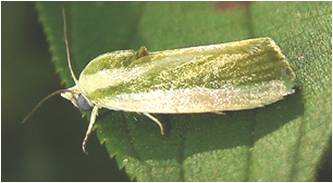
Host range: Oligophagus, cotton, bhendi, hibiscus, holly hock and other malvaceous vegetables.
Damage symptoms: Larva bores into tender terminal shoots in the vegetative stage and flower buds, flowers and young fruits in the fruit formation stage. The damaged shoots droop, wither and dry up. The infested fruits present a deformed appearance and become unfit for consumption. Bore holes - plugged with excreta.
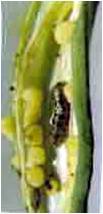 |
 |
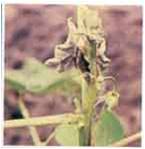 |
Bionomics: Egg period: 3-5 days. 385-400 eggs / female. Spherical, light bluish, green, crown shaped, laid singly on shoot tips, buds, flowers and fruits. Larva: 10-17 days. Six instars.: Pupa: 6-10 days. Pupates in an inverted boat shaped cocoon.
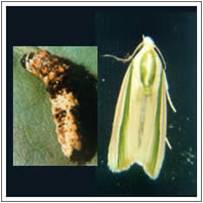 |
 |
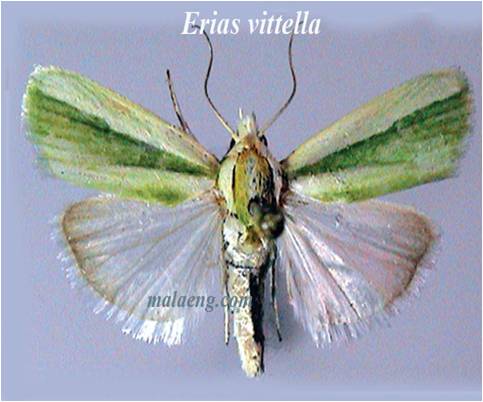 |
|
E. vitella |
E. insulana. |
Larva |
Brown, with longitudinal white stripes on dorsal side as against for |
Cream coloured body with orange dots on prothorax |
Adult |
Medium sized, head and thorax ochreous white |
Adults are smaller than E. vitella Head and thorax pea green in colour |
|
Forewings are pale white with a broad wedge shaped horizontal green patch in the middle. |
Forewings uniformly pale yellowish green. |
Management
- Grow resistant cultivars like AE 57, PMS 8, Parkins Long green, PKX 9275, Karnual Special
- Collect and destroy infested shoots, buds, flowers and fruits.
- Remove the alternate hosts like Hibiscus cannabinus, H. abelmoschus and Abutilon indicum in the cropped area.
- Release egg parasitoid T. chilonis and larval parasitoid Chelonus blackburnii.
- Release first instar larvae of Chrysoperla carnea @ 1 lakh/ha.
- Set up light traps to monitor the moths and their egg laying @ 12/ha
- Set up pheromone traps @ 5/ha.
- Spray B.t formulation such as dipel @ 2 g / lit.
- Spray carbaryl 50% WP 1 kg or endosulfan 35 EC or monocrotophos 36 WSC 1.0 L or NSKE 5% or Azadirachtin 5% 400 ml or Fenpropathrin 30 EC 250-340 ml or Pyridalyl 10 EC 500-750 ml with 500 L – 700 L water/ha.